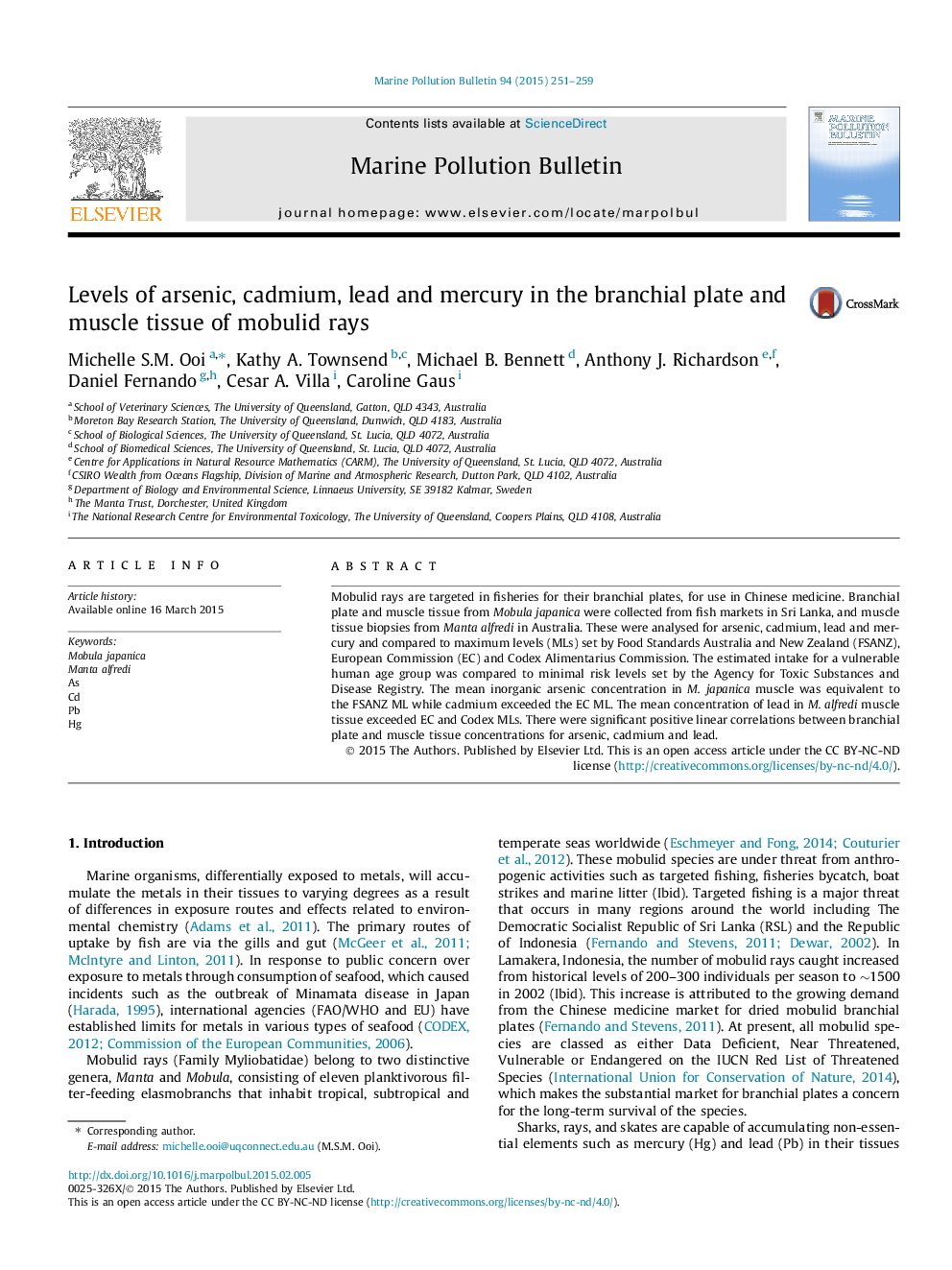| Article ID | Journal | Published Year | Pages | File Type |
|---|---|---|---|---|
| 6356853 | Marine Pollution Bulletin | 2015 | 9 Pages |
Abstract
Mobulid rays are targeted in fisheries for their branchial plates, for use in Chinese medicine. Branchial plate and muscle tissue from Mobula japanica were collected from fish markets in Sri Lanka, and muscle tissue biopsies from Manta alfredi in Australia. These were analysed for arsenic, cadmium, lead and mercury and compared to maximum levels (MLs) set by Food Standards Australia and New Zealand (FSANZ), European Commission (EC) and Codex Alimentarius Commission. The estimated intake for a vulnerable human age group was compared to minimal risk levels set by the Agency for Toxic Substances and Disease Registry. The mean inorganic arsenic concentration in M. japanica muscle was equivalent to the FSANZ ML while cadmium exceeded the EC ML. The mean concentration of lead in M. alfredi muscle tissue exceeded EC and Codex MLs. There were significant positive linear correlations between branchial plate and muscle tissue concentrations for arsenic, cadmium and lead.
Related Topics
Physical Sciences and Engineering
Earth and Planetary Sciences
Oceanography
Authors
Michelle S.M. Ooi, Kathy A. Townsend, Michael B. Bennett, Anthony J. Richardson, Daniel Fernando, Cesar A. Villa, Caroline Gaus,
